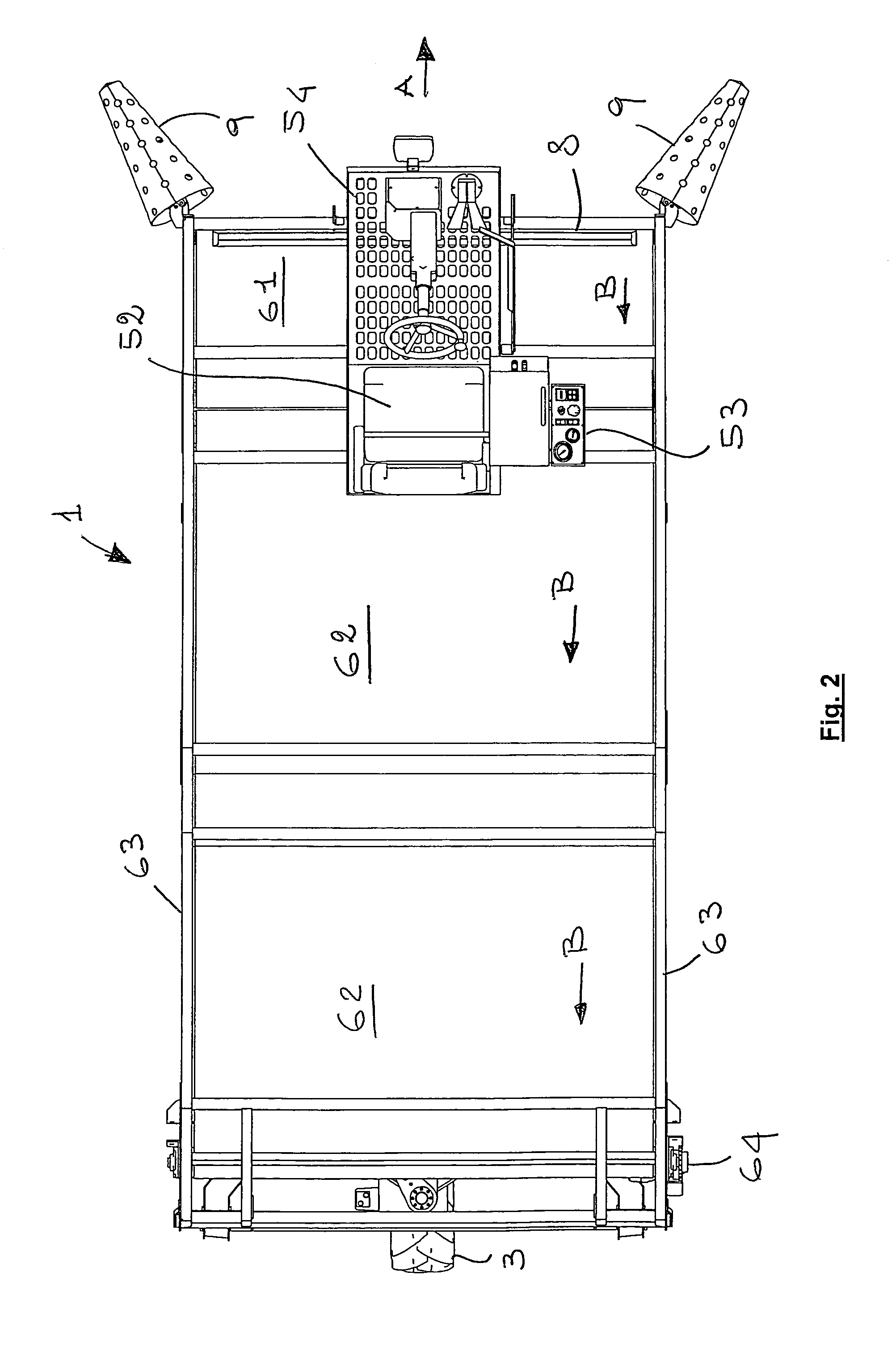Chicken-loading vehicle
a technology for loading vehicles and chickens, applied in the field of chickens, can solve the problems of inability to remove animals, inconvenient operation, and injury to animals, and achieve the effects of preventing overcrowding, ensuring safety, and speeding up the conveyor bel
- Summary
- Abstract
- Description
- Claims
- Application Information
AI Technical Summary
Benefits of technology
Problems solved by technology
Method used
Image
Examples
Embodiment Construction
, provided purely by way of a non-limiting example, to be read with reference to the accompanying illustrations in which:
[0026]FIG. 1 is an axonometric view of a vehicle according to an example embodiment in a loading configuration;
[0027]FIG. 2 is a top plan view of the vehicle according to FIG. 1;
[0028]FIG. 3 is a side view of the vehicle according to FIG. 1 in the loading configuration;
[0029]FIG. 4 shows a detail of the vehicle according to FIG. 1;
[0030]FIG. 5 shows the unloading operations using the vehicle according to FIG. 1.
DETAILED DESCRIPTION
[0031]Reference should be made firstly to FIGS. 1, 2 and 3 which show an example embodiment of a fowl-loading vehicle 1. By way of a non-limiting example, the fowl which may be loaded using the vehicle 1 are chickens.
[0032]The vehicle 1 comprises a main chassis 2. Wheels 3 are fixed to the chassis. In the embodiment shown, the vehicle 1 has three wheels 3. As an alternative to the wheels 3 it is possible to mount tracks. Preferably the v...
PUM
 Login to View More
Login to View More Abstract
Description
Claims
Application Information
 Login to View More
Login to View More - R&D
- Intellectual Property
- Life Sciences
- Materials
- Tech Scout
- Unparalleled Data Quality
- Higher Quality Content
- 60% Fewer Hallucinations
Browse by: Latest US Patents, China's latest patents, Technical Efficacy Thesaurus, Application Domain, Technology Topic, Popular Technical Reports.
© 2025 PatSnap. All rights reserved.Legal|Privacy policy|Modern Slavery Act Transparency Statement|Sitemap|About US| Contact US: help@patsnap.com



